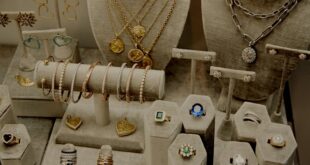The Non-Fungible Token (NFT) market hit $2.5 billion in the first half of 2021, up from around $13 million in 2020. With a growth rate like that, it’s hardly surprising that so many individuals and businesses are intrigued by what NFTs have to offer.
So, what are non-fungible tokens? Why have they taken off so suddenly? And what on earth does ‘non-fungible’ even mean?
Read on for the answers to all these questions and more, as we take a stroll through the wild and wonderful world of the blockchain’s latest gift to humanity.
What Are Non-Fungible Tokens?
To start with, let’s figure out what we mean by ‘fungibility’. A fungible item is one that can be replaced by another without any loss in function or value. Consider a dollar bill, for example, if someone takes a dollar bill from you and replaces it with a different dollar bill, you don’t care.
That’s because dollar bills (of any value) are completely fungible. They can be replaced by an identical bill with no impact on the owner.
Now consider the Mona Lisa.
It doesn’t matter how good an artist you are, the Louvre isn’t going to be happy if you swap out their Mona Lisa for your identical copy. The Mona Lisa (and all physical artwork) is ‘non-fungible’ in that sense.
NFTs are a way of bringing non-fungibility to digital goods. By tying these tokens to digital artworks, the ownership of NFT artwork becomes non-replicable, even if the image attached to the NFT can still be copied.
How Do They Work?
If you have a hi-res scan of an artwork, copy it, and send it to a friend, you both effectively have a copy of the original. This makes it hard for artists to sell ‘original’ digital artworks online, since no one is paying to have an ‘original’.
But by generating an NFT for a piece of art and storing it on the blockchain network (the Ethereum blockchain, to be specific), a single purchaser’s ownership of a digital artwork can be carved in digital stone.
In other words, it doesn’t matter how many copies of the piece get out there, the original purchaser’s ownership can be verified in perpetuity by checking the NFT blockchain.
This is why digital artists are so excited about the possibilities offered by NFTs. Art Collectors will pay a lot more for an ‘original’ than a copy, and they’ll pay similar amounts to have their ownership of a digital original verified on the blockchain.
In fact, if you’re interested in buying one yourself, check this out for more on how to buy your own NFT.
The Art of the Future, Today
So there you have it, a quick overview of how non-fungible tokens work. Whether you’re an art aficionado, an artist, or just someone interested in tech, NFTs make for a fascinating subject to read about.
And maybe one day you’ll be able to pick up an NFT of this article. That’s the dream!
Liked this article? Check out our site for more!
 HammBurg Be informed with latest news, reviews, entertainment, lifestyle tips, and much more.
HammBurg Be informed with latest news, reviews, entertainment, lifestyle tips, and much more.




